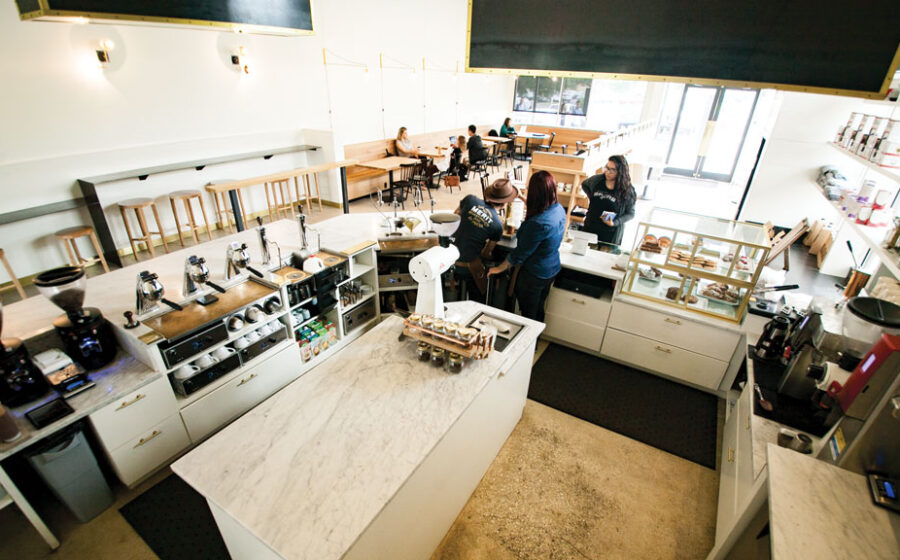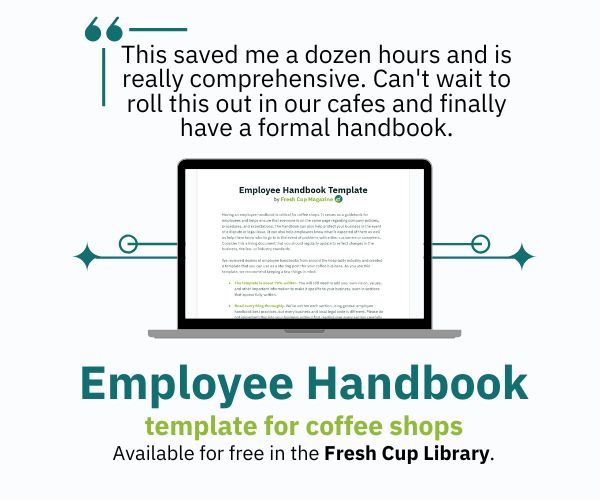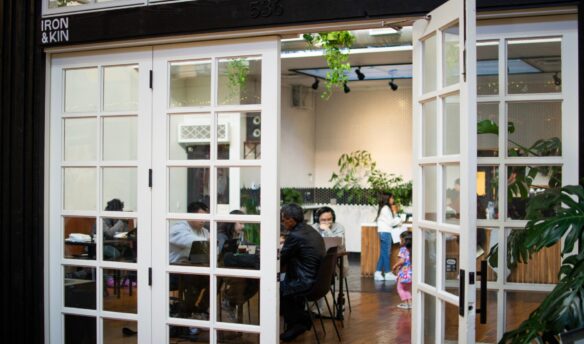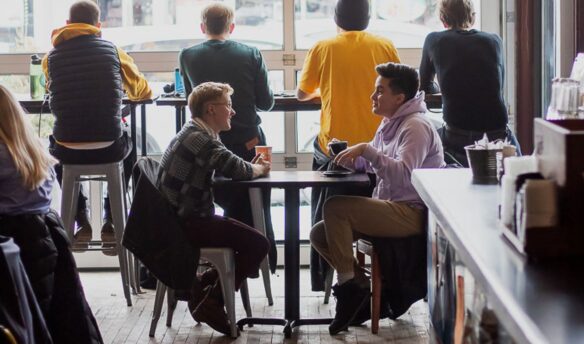[O]ne of the best parts of opening a new café is the opportunity to take the features of your older cafés and fix the things that aren’t working and refine those that are. It’s a chance to game out and experiment with new ideas, especially those that would require a remodel in the established shops.
That’s what Robby Grubbs enjoyed most when he and his team at Local Coffee were neck deep in planning and building out their newest shop near the University of Texas’s Health Science Center in San Antonio. It’s been the best part of opening each of his four shops. “I’m excited to do it again,” he says. “There are so many lessons we learn each time we do this.”
Happily for Grubbs and Local’s director of training, Brandon Acuña, most of the lessons their last café taught them were the positive kind. The last café Local opened is in the Pearl Brewery building, itself dab in the middle of a food paradise, and lines out the door are a constant. Handling that kind of volume while maintaining a high level of coffee led them to have one employee float between stations, often working as a second cashier by going down the line with an iPad to take orders. They’ll also put two baristas on milk-steaming duty while a third pulls shots.
“It’s about putting things where they’re most efficient,” Grubbs says. “Our Pearl location has so much influence on our Med Center.”
One clear example is the steaming station, which unites two wands instead of having them flank the three Modbar groupheads. Another is placing the cashier’s duties—the point-of-service, pastries, and batch brew—on the opposite side of the bar. That keeps the cashier and baristas out of each others’ way.
Lessons can be overlearned though. Building a bar in the wake of a shop that regularly sees a thirty-deep line all day might lead to overkill. “You can set up a bar to have five people, but when you’ve got a slow shift with two people it might not work so well,” Grubbs says.
What can be as exciting as trying out new ideas is bringing those to the older cafés. Acuña took a small, custom-built rack from Local’s sibling roastery, Merit Coffee, and hung it from a basin at their steaming station to hold towels. It was perfect. “That’s going to show up in all our cafés,” he says.
Evaluating your work flow, finding better ways to do things, discovering a killer way to store towels—this is what a new shop can offer. When it’s approached with care, it leads to a pretty sweet bar.

1) The Recess: Owner Robby Grubbs wanted to keep equipment off the bar, so the Mahlkönig Peak grinders were set in a recess, along with syrups, a scale, and a ticket printer. Director of training Brandon Acuña loves that printer. “I don’t know how we would do anything without it.”
2) New Plans: This café didn’t start with a Modbar in the plans, but extensive testing at their roastery lab convinced Grubbs to bring it in. That changed the design of the bar, which now includes custom, woven-brass drip trays, which in turn inspired brass accents throughout the café.
3) Steam Station: When things get busy at Local, one or two baristas steam milk while another pulls shots. A separate steam station keeps those crews out of each other’s way.
4) Pour-over: This station, set on a slightly lower counter, is the bar’s visual anchor. A gorgeous, brass V60 filter holder is the closest thing any bar has had to a hood ornament.
5) Toddy on Tap: Cold-brew coffee is kegged and run through a tap system next to the POS, an easy turn-and-pour for the cashier.
6) Pastries on Top of Pastries: The case holds croissants, muffins, macarons, bars, and even “Pop Tarts” from Bakery Lorraine. The drawers underneath hold extra pastries. Fun fact: pastries served in bags are tax free in Texas.
7) Light Box: These boxes send a spotlight down on the bar, giving it a show feel. Acuña says, “At night it’s really gorgeous.” This big one doubles as a menu board.
8) Batch-brew Bar: The Fetco batch brewer is kept out of the way on the back bar, but close in for the cashier.
9) Multi-POS: Learning from an older Local café, a second receipt printer sits under the main POS. When lines form, a floating employee takes a second iPad POS and rings up orders that the main cashier fills.
10) EK and Ice: Local started as a multi-roaster, and along with three of their own coffees they still feature a guest roaster. All the coffees are pre-dosed and ground on this EK 43. Next to it, an ice bin is filled from an icemaker in the back of the café.
11) The Island: A two-door bar fridge with milk, water for iced americanos, and seltzer for espresso service is housed under the island. Acuña mandated the counter stay clean.
12) (Happy) Milk Accident: This bin was meant to hold pitchers. Then Acuña realized it could hold milk, two gallons of it, along with three alternative milk boxes. It has its own drain.
13) To-go Cups: Where to put to-go cups? “This is probably the thing we talk about the most,” says Acuña. These dispensers are in all of Local’s cafés, and this location has three (the others are hidden in this photo).
14) Close Module, Warm Cups: To keep the espresso modules (the black boxes) close to the groupheads, they went under the bar. To keep the counter clutter-free, ceramic cups went on the modules, which warms them the way a traditional machine would.
—Cory Eldridge is Fresh Cup‘s editor.















